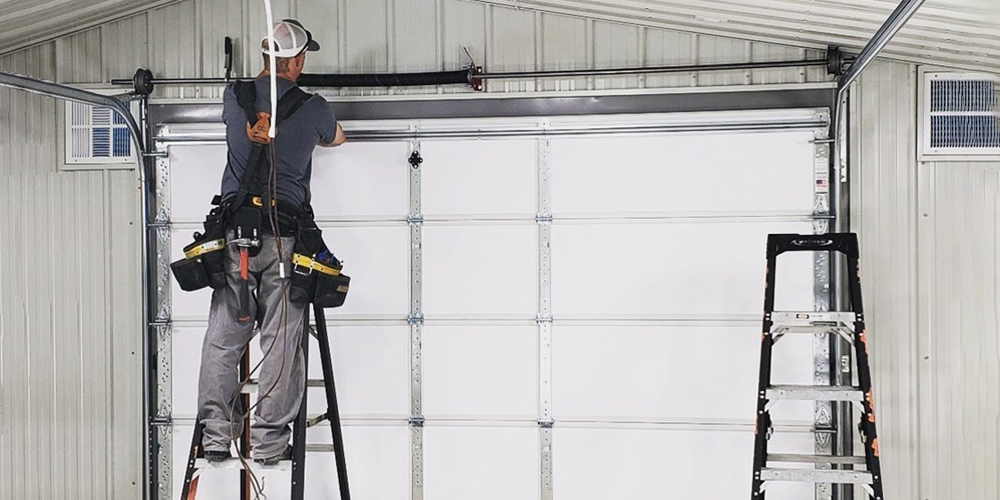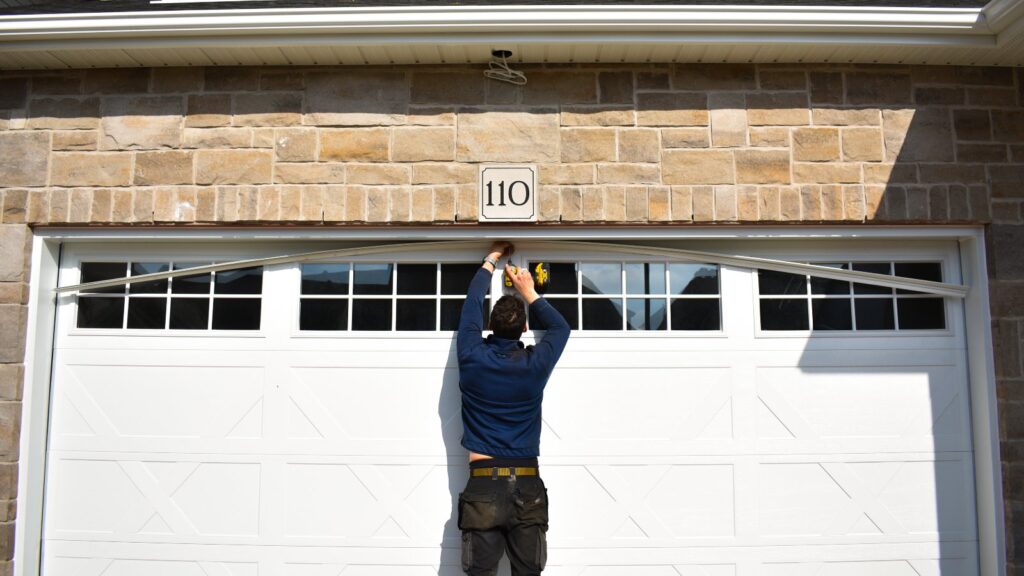Common Issues and Solutions for Homeowners With Garage Doors
As a homeowner, you might face several usual garage door concerns that can interrupt your day-to-day regimen. Allow's check out the most regular garage door issues and how you can tackle them efficiently.
Malfunctioning Garage Door Openers
When your garage door opener starts acting up, it can be aggravating, particularly if you count on it daily. You might find that it does not react to your remote or the door opens and closes unpredictably. First, check the batteries in your remote; weak batteries can create recurring problems. If that's not the issue, examine the opener's source of power. Verify it's plugged in and the breaker hasn't tripped. Occasionally, a stuck or dirty antenna can hinder signal reception, so offer it a fast clean.
Don't wait to consult your individual manual for fixing tips certain to your model, or think about calling a specialist if the problem continues. Taking these actions can aid restore your garage door's functionality in no time.
Misaligned Garage Door Tracks
If your garage door isn't opening up or shutting smoothly, misaligned tracks could be the wrongdoer. Common causes consist of deterioration or unintended bumps that disrupt the positioning. Taking care of these track concerns can recover your door's feature and keep it running safely.
Causes of Misalignment
Misalignment of garage door tracks can happen for a number of reasons, usually resulting in discouraging functional concerns. One usual reason is normal wear and tear; with time, screws and bolts can loosen, triggering the tracks to move. If your garage door obtains bumped or struck, that influence can misalign the tracks as well. Additionally, changes in temperature and humidity can cause the steel tracks to expand or contract, bring about imbalance. Dust and particles build-up can likewise obstruct the tracks, pushing them misplaced. Finally, improper installment can bring about relentless placement issues. Identifying these reasons can aid you comprehend why your garage door isn't working smoothly.
Dealing With Track Issues
Dealing with track concerns with misaligned garage doors needs a careful approach to assure smooth operation. Examine the tracks for bends or particles that may block motion. Use a degree to check if the tracks are right; otherwise, delicately tap them back right into positioning with a rubber club. Next, validate the brackets holding the tracks are limited; loose screws can create misalignment. If the tracks are considerably damaged, think about replacing them. When aligned, lube the tracks with a silicone-based spray to lower rubbing. Examination the garage door's operation to verify it opens and closes efficiently. Regular maintenance will certainly aid stop future track concerns and keep your garage door operating appropriately.
Broken Springs
When your garage door all of a sudden declines to open or shut, it's often because of damaged springtimes. These springs bear the weight of the door, making it simple for you to raise or reduce it. If they break, you'll see that your door feels heavy or won't move whatsoever.
To verify the problem, aesthetically evaluate the springtimes for voids or breaks. If you suspect they're broken, don't attempt to fix them yourself, as they're under high tension and can cause injury. Instead, call an expert who can safely replace the springs.
Regular maintenance can help avoid spring failure, so watch on their condition and lubricate them periodically. If you're experiencing frequent spring troubles, think about upgrading to higher-quality springs that can endure more wear and tear. This proactive method can conserve you time and cash in the lengthy run, guaranteeing your garage door operates efficiently.
Noisy Garage Doors
After resolving issues like broken springtimes, you could observe one more common trouble: noisy garage doors. If your garage door squeals, rattles, or groans, it can be fairly bothersome, particularly if it's disrupting your peace. The sound frequently comes from damaged rollers, loosened hardware, or lack of lubrication.
Beginning by evaluating the rollers and joints. If they're unclean or damaged, cleansing or changing them can considerably decrease sound. Next off, check for loosened bolts or screws; tightening them can eliminate rattling sounds. Don't neglect to lube the moving components with a silicone-based linked here spray or garage door lube. This will certainly assist reduce rubbing and sound.
If your door still appears like a dinosaur, think about seeking advice from a professional. Routine upkeep can stop loud garage doors and extend their life expectancy, ensuring you appreciate a quieter, smoother operation.
Garage Door Remote Issues
Lots of homeowners experience disappointment with garage door remote concerns at some factor. Replace them and see if that resolves the trouble. Consult your garage door opener guidebook for specific directions. garage doors nanaimo.
In some cases, disturbance from various other electronics can affect your remote. Look for any kind of neighboring devices that might be triggering a signal interruption. If that doesn't assist, evaluate the remote for physical damages, like splits or broken buttons.
An additional usual concern is range; you could just be also much from the garage door. They here can diagnose and deal with any kind of hidden issues with your garage door system.
Climate Stripping Issues
If you discover drafts, water leakages, or boosted energy costs, your garage door's weather stripping might be broken. Comprehending just how to identify signs of wear and recognizing setup tips can assist you maintain a correct seal - garage doors nanaimo. When it's time for a replacement, you'll have lots of options to select from
Signs of Put On
As you use your garage door over time, the weather condition stripping can begin to reveal indications of wear, which is important to resolve. Search for voids or cracks in the rubber or vinyl material; these can allow drafts, dust, and moisture. If you observe the stripping is breakable or tearing far from the door, it's time to act. You could also discover that your garage door does not seal appropriately, leading to raised energy expenses or parasite problems. Consistently examine the weather condition removing to catch these problems early. If you see substantial damages, replacing the weather condition removing can aid maintain your garage's efficiency and safeguard your items from the aspects. Do not overlook these signs-- act quickly!
Installation Tips
When you discover wear on your garage door's weather condition stripping, attending to the installment can make a significant difference. Validate you have the appropriate kind of climate removing for your garage door. Procedure the door precisely to cut the stripping to the suitable official statement length. Tidy the surface area where you'll use the weather condition stripping, eliminating any type of dirt or debris to assure a solid bond. Utilize a high-grade glue or comply with the producer's instructions for installation. Make sure it's aligned effectively to secure spaces efficiently. Routinely check the installment for any type of indications of damages or detachment. By taking notice of these information, you'll improve your garage door's insulation and safeguard your home from the components.
Replacement Options
While you might have installed your garage door's climate stripping correctly, damage can still lead to issues that demand replacement. If you notice drafts, wetness, or pests entering your garage, it's time to consider new weather condition removing. Search for alternatives like plastic or rubber products, which supply better insulation and sturdiness. Action your door's dimensions properly to guarantee an appropriate fit, and pick self-adhesive strips for easy setup. If you prefer a more durable service, think of employing a specialist to install a new limit seal. Routinely inspecting and changing weather removing not just boosts your garage's energy effectiveness however additionally protects it from damage. Don't wait up until you encounter larger issues-- act now!
Sensor Malfunctions

Start by examining the sensor placement. Make sure both sensing units face each various other and are level.
If the sensing units show up intact yet the door still won't close, it may be time to change them. You can discover suitable sensors at your regional equipment store. Simply remember to comply with the supplier's instructions for setup. With a little troubleshooting, you can generally deal with sensor concerns and obtain your garage door functioning efficiently once again.
Often Asked Inquiries
How Frequently Should I Maintain My Garage Door System?
You must preserve your garage door system a minimum of twice a year. Routine checks for wear, lubrication of moving parts, and readjusting the tracks can keep it working efficiently and extend its life expectancy considerably.
Can I Mount a Garage Door Myself?
Yes, you can set up a garage door yourself, but it needs mindful planning and the right tools. See to it you adhere to the producer's directions closely and consider security preventative measures to prevent accidents during installation.
What Is the Typical Life Expectancy of a Garage Door?
The average life-span of a garage door is typically 15 to three decades, relying on products and upkeep. If you care for it well, you can optimize its long life and appreciate reliable efficiency.

Just how Do I Select the Right Garage Door?
When you select the right garage door, take into consideration materials, style, and insulation. Think concerning your home's style, budget, and maintenance needs. Don't fail to remember to examine regional regulations and energy performance scores for optimal performance.
Exist Energy-Efficient Garage Door Options Available?
Yes, there are energy-efficient garage door options readily available. You can select insulated doors, which aid keep your garage's temperature, or look for versions with a high R-value to boost power performance and lower power costs.